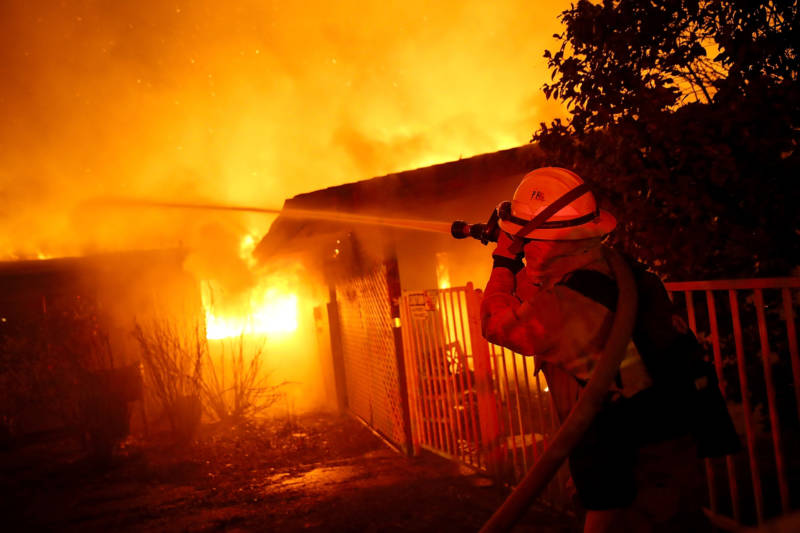Federal agencies are not performing enough prescribed burns in California and other Western states to curb the risk of wildfire, even as the practice has been adopted more widely by land managers in other regions in the U.S. That’s according to a new analysis published Wednesday in the journal Fire.
California Lagging Way Behind Southeast in Prescribed Burns to Curb Wildfire

Prescribed fires are deliberately ignited by forest managers to burn away brush and vegetation that can act as fuel during an uncontrolled wildfire. These prescribed burns are widely considered to be an effective tool in reducing wildfire risk.
The paper, published by fire researcher Crystal Kolden, found that between 1998 and 2018, the number of acres subjected to prescribed burns skyrocketed in the Southeast while basically remaining flat in both Northern and Southern California. Less than 3% of all controlled burns in the U.S. occurred in the state, while 70 percent occurred in the Southeast. Kolden used data from the National Interagency Fire Center.
Maya Miller, a reporter who worked on a research brief on the study for Climate Central, told KQED’s Brian Watt Wednesday that California is lagging in its use of prescribed burns as a wildfire mitigation tool.
“Further analysis state by state shows that California has been burning at one of the lowest rates nationwide,” Miller said.
Meanwhile, federal agencies continue to spend considerably more on fire suppression than on prescribed burns, according to data analyzed by Climate Central.
Lack of Acceptance in the West
In addition to helping prevent catastrophic wildfires, prescribed burns are good for overall forest health and can restore balance to ecological processes disrupted by years of fire suppression.
The study notes that prescribed burns produce smoke that can create bad air quality. In rare circumstances, prescribed fires have grown out of control. Kolden, in her paper, suggests that these factors contribute to “social barriers” that have disincentivized fire managers, particularly on the federal level, from utilizing prescribed burns.
Wildfire smoke, however, contains three times as much pollution as smoke from prescribed fires, according to a groundbreaking 2017 study published in the Journal of Geophysical Research: Atmospheres.
Miller said prescribed fires that burn out of control are rare.
“It’s a risk and a contributing factor as to why some agencies have been more skeptical to embrace the practice,” she said. “Having said that, when agencies do cultivate the skill set to be able to conduct a burn in a safe way, 99 percent of the time it’s a safe and productive tool to use.”
In February, Cal Fire published a report that found the state’s forests were being poorly managed by state, federal and private landowners. The report recommended California immediately start to reduce its fuel load. On March 22, Gov. Gavin Newsom declared a state of emergency on wildfires and approved a plan to speed up prescribed burn projects in some locations.
Jon Brooks contributed to this report.
